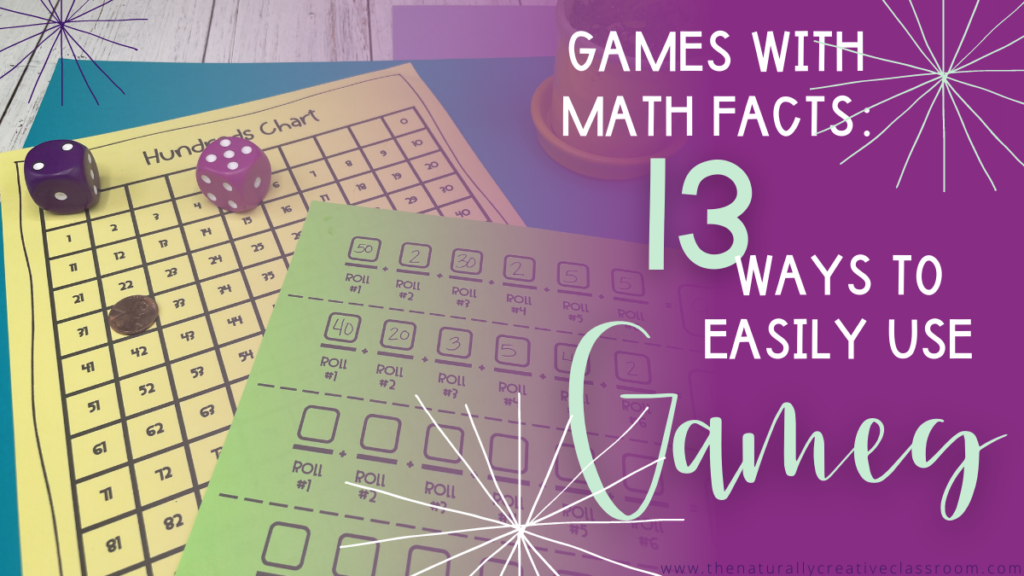Why do kids need Addition and Subtraction Math Facts Fluency?
Using games with math facts is a fun way to build fluency. Kids start to learn basic math facts very early in life. Think about how soon we introduce 1+1=2 to our babies and toddlers. Through counting practice, kids begin to learn basic facts in preschool and then by the end of kindergarten, should be able to add within ten fluently. In second grade, students should know all the facts through 20.
Build a Strong Mathematical Foundation
One reason that students need to memorize basic facts is because they are the foundation of many mathematical principals and concepts that they will learn throughout their school career. A solid foundation of facts and number sense will make learning these concepts easier.
Free up Working Memory
Another reason kids need to memorize basic facts is because fact memorization frees up working memory, giving kids more “brain space” to think about how to solve a problem. This can be especially important when solving multi-step word problems. Memorizing facts will lesson math anxiety and give kids more confidence. As I talk about in this post, math anxiety eats away at working memory, making it more difficult to solve problems. Fact memorization allows working memory to focus on the “how”.
Reduce Errors
Next, fact memorization reduces errors. Have you ever completed a complicated math problem only to discover that you have made an addition or subtraction error early on which threw off your entire answer? This can be super frustrating and add to your math anxiety. Memorizing facts will reduce these types of errors.
These are just a few of the reasons why it is important to memorize basic math facts.
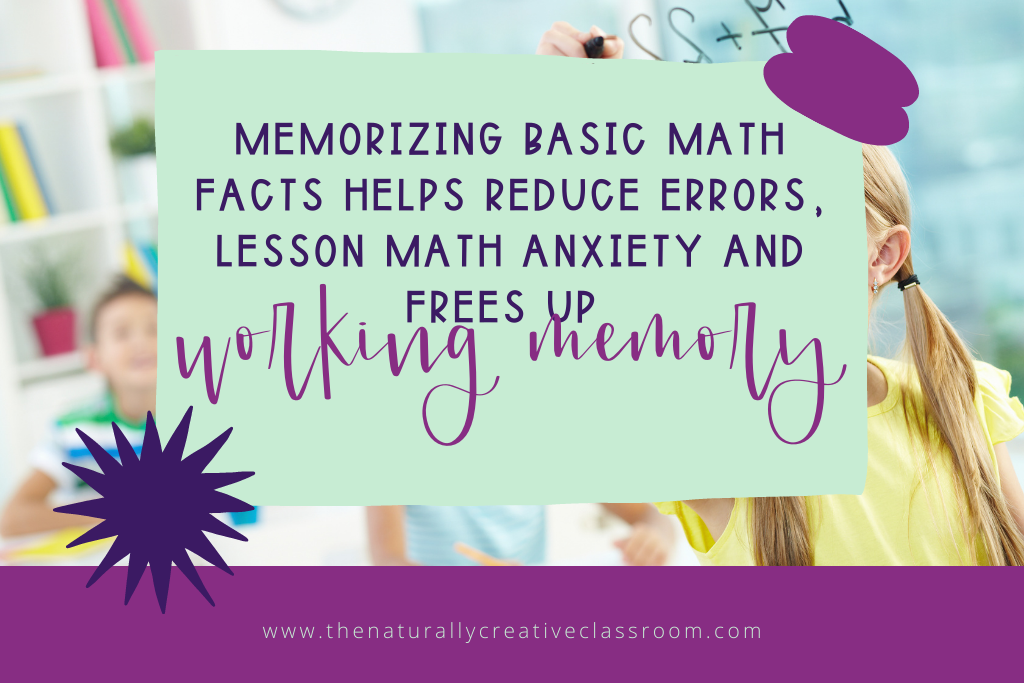
What are mathematical facts for addition kids need to learn?
By the end of second grade, students should memorize all facts up to the number 20, or all facts between 0+0 through 10+10. Knowing these facts will build a strong foundation for multi-digit addition and subtraction and tackling multi-step word problems. Further on, a strong knowledge of these facts will help students learn multiplication and division.
Visualizing addition math facts
Before you dive into games with math facts, set up your child to be able to visualize addition and subtraction math facts. This is the first step towards building strong number sense that will be needed throughout their mathematical career.
Number Talks
One way you can do this is by using two different color counters or cubes. Ask them to show you 9+4 using two different colors. Allow them to manipulate the counters to figure out things such as if they move one cube from the 4 to the 9, then they can do 10+3 which is more friendly fact.
Number talks are a fabulous way to build number sense. Number talks will help students learn to think flexibly with numbers. Hold up a card such as the one below and ask them “what do you see?”. As kids develop their flexible thinking and math fluency, the problems move from visual to conceptual. My favorite book for number talks is Number Talks: Whole Number Computation by Sherry Parrish
Rekenrek
A rekenrek is another tool that you can use to introduce or build upon number sense. Kids love it because it is hands on and allows for easy counting and subitizing. You may often see rekenreks in the younger grades, but students in the upper grade can be introduced to rekenreks as a number sense intervention. You can learn all about the rekenrek with my resource available here. Some games with math facts for the Rekenrek include:
Rekenrek Memory-
For this game, get a deck of ten frame images and a deck of rekenrek images. Put the cards face down. Choose 2 cards. If the number on the ten frame and the number on the rekenrek match, keep the cards and choose again. If it’s not a match, play continues to the next player. The one with the most cards when all matches have been made wins. You can find it here.
Turn Around Fact Match
For this Rekenrek memory game, get a deck of rekenrek cards with commutative facts on them (3+1=4, 1+3=4). Shuffle them up and pick two. If the facts are turn around facts, keep the cards and draw again. If they are not, play continues to the next player. The player with the most cards at the end of the game wins! You can find it here.
Quick Image Rekenrek Games–
Use a set of cards that has all numbers on the rekenrek from 1-20. One player shows the card for 3-5 seconds to two other players. The first person to identify the number wins the point. Play until the one player has 10 points. You can find it here.
Number Flash–
For this game, you can use playing cards for numbers 1-10, or a set of cards labeled 1-20. One player shows the card to the other two players. The first player to show that number on their rekenrek wins a point. The first player to get 10 points wins! You can find it here.
You can find these, instructions for making your own (free) rekenreks, assessments and more here.
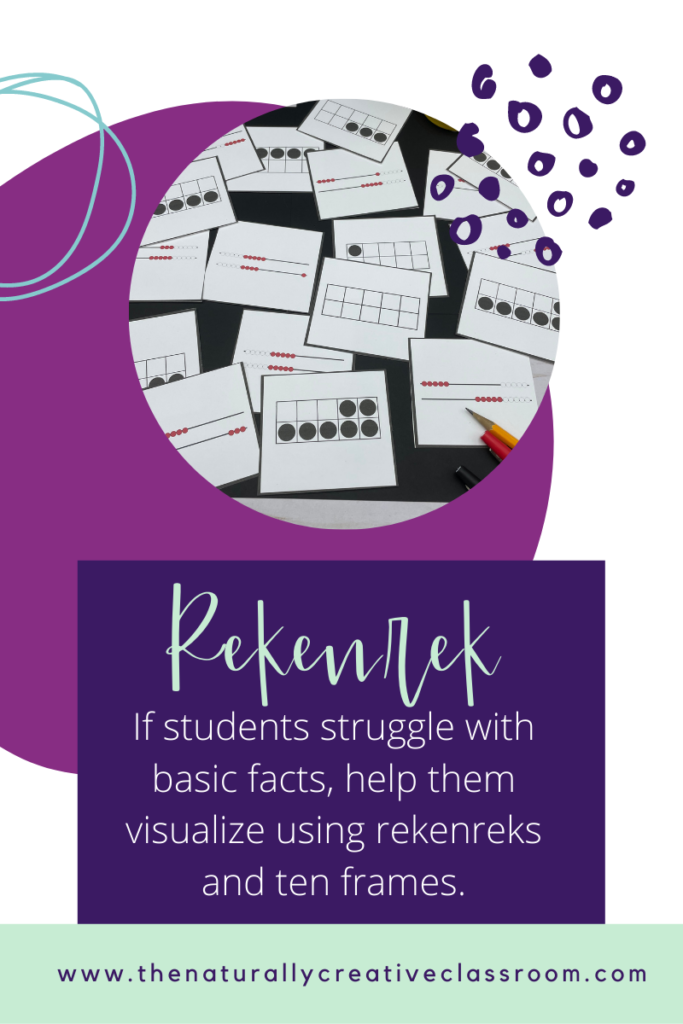
Making Time for math facts games
With our busy schedules these days, it can be hard to find time to practice math facts with our kids! Learning a few quick games with math facts will help you engage your child throughout the day or fit in a little practice while waiting for your other child at soccer practice or when you find you have a few extra minutes between cleaning up dinner and bedtime.
Games for math facts with dice
I love, love, love dice games, and not just for math practice. Here are a few of my favorites to build addition and subtraction math fact fluency.
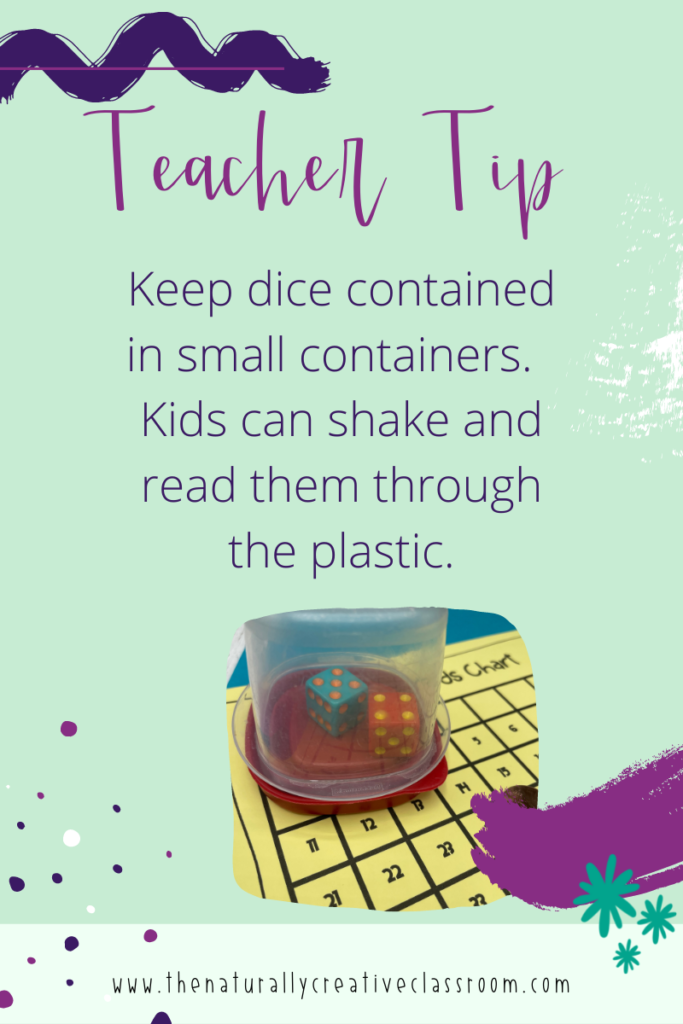
PIG Dice Game
This game can be played with 2-4 players and two dice. Practice math facts and addition to 100.
Object: Be the first to reach 100 points
Materials: 2 dice, scratch paper, hundreds chart (optional)
How to play: You can “hog the dice” and keep rolling the two dice as much as you want to add to your score. You can choose to stop at any time, but if you choose to continue, you risk losing all your points for that round if you roll a 1. For example, Charlie rolls a 4 and a 5 for 9. He keeps going and rolls a 3 and a 5, making his total so far 17. He rolls one more time and gets a 1 and a 6. Since he rolled a one, his score is now zero.
Make 10
This game can be played with 2-4 players. Practice math facts to 10. This game can easily be differentiated for higher facts using one, two or three dice for “make 15” or “make 25”.
Object: Make ten
Materials: 1-4 dice, scratch paper, ten frame (optional), counters (optional)
How to Play:
1 Dice Version– Roll one dice and, if needed, show it on the ten frame. Determine how many more are needed to make 10 and that is your score for that round. For example, if you roll a 4, you need 6 more to make ten. Your score for that round is 6. Play until the first player reaches 20 points.
2 or more Dice: Decide upon a target number- 10, 15 or 25. Roll the dice and add the numbers together. Then, add or subtract to get to your target number. For example, let’s say your target number is 15. You roll a 5 and a 6. Add those together to reach 11. You need 4 more to get to 15. Your score for that round is 4. Play until the first player reaches 20 points.
101 AND OUT
This game is best with two players, but can be played with up 4. Practice basic facts, estimation and adding to 101.
Object: Be the one to be closest to 101 without going over
Materials: Game Board- make your own or download this printable board, 1 dice
How to Play: Roll the die six times. For each roll, you can count the number as a ten or a one. Record each roll. Add up the numbers. Whoever is closest to 101 without going over wins!
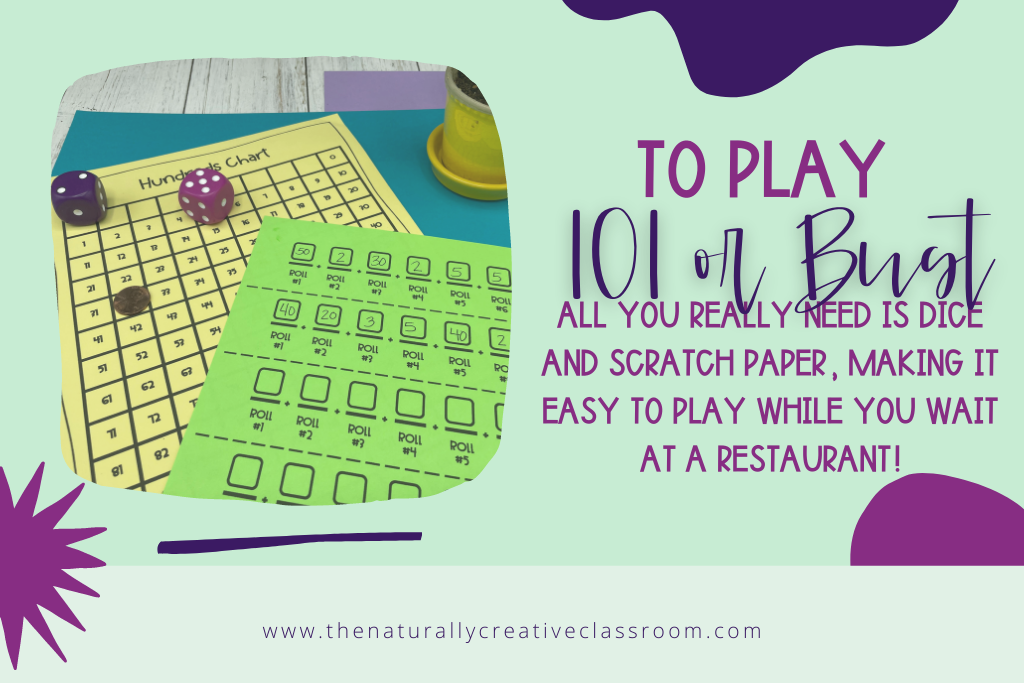
Math Facts Games for addition and Subtraction with Cards
No doubt you have a pack or two of cards lying around your house somewhere! Dust them off and use them to play these awesome games with your kids to boost their addition and subtraction math facts.
Subtraction Solute
3 players are needed for this game. Practice basic math facts and finding the missing number in an equation.
Object: Be the one to call out your number first.
Materials: One deck of cards for every three players. Face cards are removed for younger players. For upper grades, face cards are worth 11 points.
How to Play: Decide who will be the general, and who will be the 2 soldiers. The general will deal out the deck of cards between the two soldiers. For each round, the soldiers will take a card from the deck and “solute” the general by putting their card face out on their forehead. The general is the only one who can see both cards, while each soldier can only see their opponents card. The general adds the two cards together and says the sum. The first soldier to call out the number on their card wins both cards. The soldier with the most cards wins.
Firecracker
Practice addition and subtraction facts.
Objective: Be the first team (or fuse) to reach and set off the firecracker
Materials: 2 decks of addition and subtraction flash cards, maraca, clapper, etc
How to Play: Line up the class in a straight line and decide where the middle is. Place a maraca, clapper or other noisemaker in the middle of the line. You now have 2 teams, or “fuses”. You and another student start at opposite sides of the line and show flash cards to students. As they get the answer correct, they will sit down, shortening the fuse. The first team to reach the firecracker and set it off wins!
Race to 100
Be the first to get to 100! This game is easily differentiated by changing the target number.
Objective: Be the first to get to 100
Materials: One deck of cards, scratch paper, hundreds chart (optional)
How to Play: On your turn, take a card and add it to your running total. The first person to reach 100 wins. Remove face cards for younger players, and for older players, Jack=11, Queen=12, King=13, and Ace = 1 or 11
Solitaire Pyramid
I just loved this game that I found. I will give a general idea of how to play, but you can find full instructions here.
Objective: Clear your pyramid
Materials: One deck of cards with face cards removed
How to Play: Create a 6 row card pyramid. Using only cards that are fully exposed, make 10 with as many cards as you can. You can remove a 10 or a 6 & 4 that make ten. If there are no more ways to make ten, turn over a card from the remaining deck. If you can pair that with a card to make 10, do it! Play until you can no longer use any of the exposed cards or until you have cleared your pyramid.
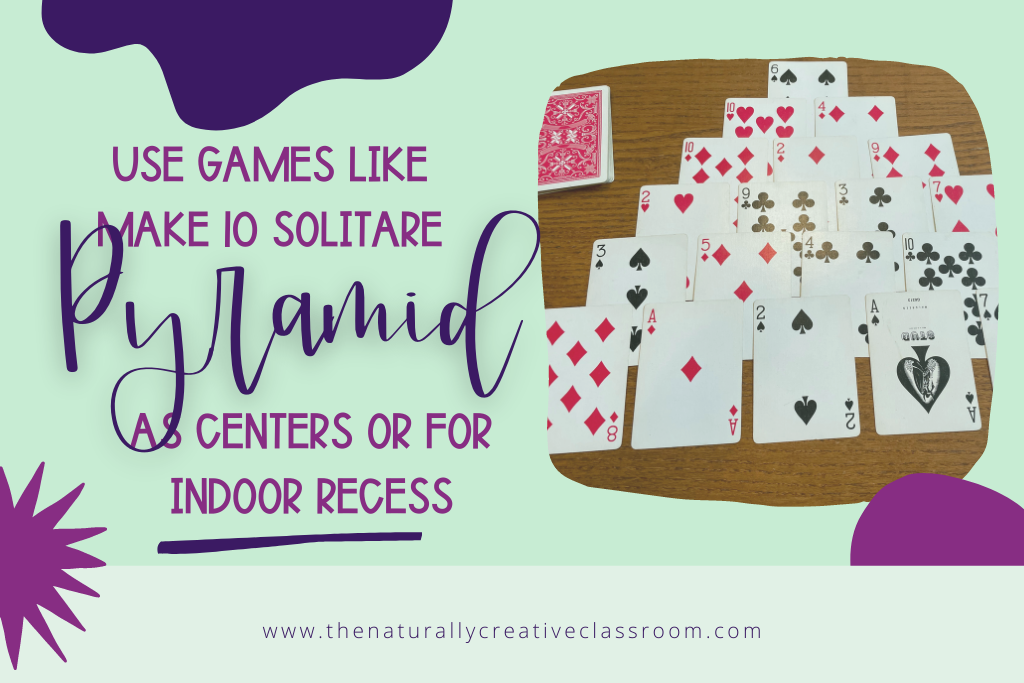
Make 10 (0r 15 or 20)
I came across those game online. The mom even has made cute, free, downloadable mats that you can put in a sleeve and make an easy differentiated center. You can find the mats here.
1-2 players
Object: Be the first to use all your cards or to have the least number of cards left
Materials: Make 10 (or 15, or 20) mats, deck of playing cards with face cards removed
How to Play: If playing with two players, deal the cards out evenly between the two players. Each player puts 4 cards face up in front of them. They then take out 10s or pairs to 10. Players replace cards with cards from their pile. If you can’t make 10 from the 4 cards that are face up, use the cards from the draw pile to make a match. Play until one player is out of cards or until there are no more combinations to 10. Players with the most 10s wins!
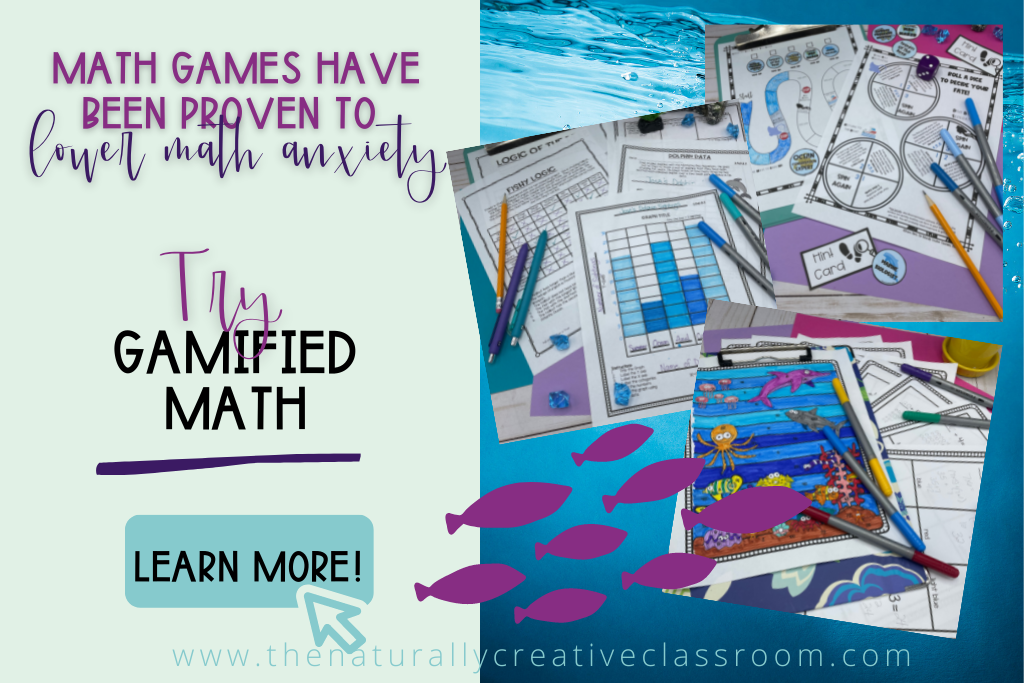
Find a good math facts app
Games with math facts are plentiful on line, and best of all, they are FREE! They make great centers or a place to send parents when they are looking for more at-home practice for their students. If you are a parent, many other sites are free for teachers. If you find one you like, see if your teacher can create a free account for your student.
Here are a few of my favorites:
Games with math facts for engagement
Math games have been proven again and again to increase math engagement and decrease math anxiety. Memorizing math facts will leave more room in working memory to help solve longer, more complicated problems without having to focus on basic facts.
Try out some of these games with your kids and let me know how you like them!

